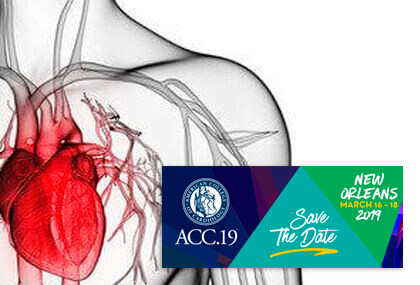Courtesy of Dr. Carlos Fava. Self-expanding supraannular aortic valves have proved to be superior to surgery in high-risk patients and noninferior in intermediate-risk patients. However, the current challenge is posed by low-risk, generally younger, patients. In that sense, our purpose is to determine device effectiveness and safety in terms of mortality and stroke rates (which are…
NOTION and UK TAVI Report Good Long-Term Outcomes
Both studies followed beyond 5 years patients with severe aortic stenosis who had undergone transcatheter aortic valve replacement (TAVR). Findings included low rates of significant valve degeneration and failure, in both cases. While data on the long-term degeneration of transcatheter-implanted valves are scarce, follow-up from the NOTION trial of low-risk patients and from the UK TAVI…
Un Underestimated Symptom of Aortic Stenosis
For the first time, this long term observational study on a large cohort of contemporary patients with aortic stenosis (AS), has shown syncope is an underestimated threat, associated with worse prognosis after surgical aortic valve replacement (SAVR). It is interesting to note that other symptoms or early signs of AS that will normally indicate SAVR…
How long should we wait with asymptomatic aortic stenosis and preserved LVEF?
Courtesy of Dr. Carlos Fava. Asymptomatic severe aortic stenosis with preserved ventricular function is challenging. At present, it remains unclear whether we should operate or not and, according to some recent reports, neither do we know what patients will benefit from surgery. The study looked at 1678 patients with asymptomatic or minimally asymptomatic severe aortic…
Good Outcomes for MitraClip “Off Label”
Courtesy of Dr. Carlos Fava. Mitral regurgitation is the most frequent type of valve disease, accounting for >6% of patients over 65 years old. Surgery is currently the strategy of choice, but percutaneous treatment is a valid alternative. The long-term progress of symptomatic patients at high surgical risk who do not meet the formal indications for…
Are Aortic Stenosis and Kidney Dysfunction Associated?
Courtesy of Dr. Carlos Fava. Aortic stenosis happens in 2.8% of patients over 75, and is even more frequent in dialysis patients. However, it remains unclear whether kidney dysfunction increases the risk of aortic stenosis. The present study looked at 1,121,875 patients from the SCREAM project (Stockholm CREAtinine Measurements). Mean age was 50, and…
Anticoagulation Plays a Controversial Role in TAVR
Men gender, kidney failure and atrial fibrillation are the factors that most affect 3-year mortality after transcatheter aortic valve replacement. On the other hand, surprisingly enough, anticoagulation (mostly indicated for atrial fibrillation) reduces mortality risk – especially the risk of valve deterioration – after TAVR. Should anticoagulation be included in post TAVR protocols? This question…
The Physiopathology Behind Valve Degeneration in TAVR
The degeneration of transcatheter biological valves clearly depends on time and starts with thrombus generation and subsequent histological changes resulting in valve failure (due to regurgitation, stenosis, or both). Thrombus formation is the first change, observed early in computerized tomography (CT) scans after implantation. Most times it is completely asymptomatic, which leaves many of us…
Bundle Branch Block and Need for Permanent Pacemaker, a Major Challenge after TAVR
Courtesy of Dr. Carlos Fava. The development of new valves for TAVR and the increased experienced of operators have significantly decreased paravalvular leak. However, new bundle Branch block (BBB) and the need for permanent pacemaker (PPM) are still relatively high, and their impact and evolution remain controversial. The study looked at 816 patients, 437…
TAVR Is Feasible and Offers Good Outcomes in Patients with Cancer
Courtesy of Dr. Carlos Fava. Oncology patients have been excluded from all studies, but many of them have a life expectancy of over a year or two, and aortic stenosis can pose a problem as regards their treatment. This study analyzed 2744 patients who underwent TAVR. Among them, 222 presented cancer (8.1%). Patients with cancer were younger,…
Percutaneous Closure Systems Are Safe in TAVR and Aneurysms
Courtesy of Dr. Carlos Fava. Currently, one of our medical challenges is to conduct procedures requiring access with large introducer sheaths in a simpler way, without requiring surgical intervention and closing with percutaneous devices while maintaining procedural quality and safety. There are several devices, but they require a learning curve and the only information available comes…










